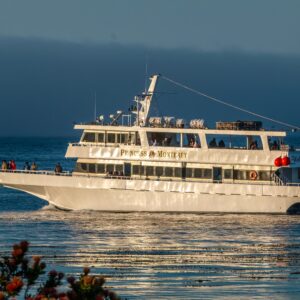New Zealand is renowned for its stunning landscapes, diverse wildlife, and outdoor adventures, but one experience stands out among the rest – whale watching. The crystal-clear waters surrounding this island nation offer the perfect backdrop for encountering these magnificent marine giants. In this blog post, we’ll take you on a journey to explore the thrilling world of whale watching in New Zealand.


New Zealand’s unique geographical position in the South Pacific Ocean makes it an ideal destination for whale watching. Several key locations around the country offer exceptional opportunities to witness these gentle giants in their natural habitat.
1. Kaikoura: Located on the South Island’s east coast, Kaikoura is one of the most renowned whale watching destinations in the world. The convergence of warm and cold ocean currents in the Kaikoura Canyon creates an incredibly nutrient-rich environment, attracting an abundance of marine life. Here, you can witness sperm whales, humpback whales, orcas, and even the elusive blue whale.
2. Bay of Islands: Up in the North Island, the Bay of Islands offers a picturesque setting for whale watching. In addition to whales, you can also spot dolphins, seals, and a variety of seabirds here. The Bay’s tranquil waters make it an excellent choice for a family-friendly whale-watching excursion.
3. Auckland: New Zealand’s largest city, Auckland, is not only a bustling urban center but also a gateway to marine adventures. Several operators offer boat trips to the Hauraki Gulf, where you might encounter Bryde’s whales, common dolphins, and even the critically endangered Maui’s dolphin.
The Best Time to Go
To maximise your chances of spotting whales, it’s essential to visit during the right season. The best time for whale watching in New Zealand varies depending on the species you hope to see:
1. Sperm Whales: These giants can be seen year-round in Kaikoura due to its unique underwater geography.
2. Humpback Whales: Visit Kaikoura from June to July or the Bay of Islands from June to September for your best chance to witness humpback whales on their migratory journey.
3. Orcas: The Bay of Islands is your best bet to see orcas, which are most commonly spotted from December to April.
4. Blue Whales: To catch a glimpse of the world’s largest animal, the blue whale, head to Kaikoura from December to March.
Selecting a Tour Operator
When choosing a whale-watching tour operator, keep these factors in mind:
1. Reputation: Look for operators with a strong reputation for eco-friendly practices and responsible wildlife viewing.
2. Guides: Knowledgeable guides can enhance your experience by providing insights into the marine life and the local ecosystem.
3. Boat Size: Smaller boats provide a more intimate experience, while larger vessels may offer more amenities. Choose based on your preferences.
4. Safety: Ensure that the operator adheres to all safety regulations and has a good track record.
Conclusion
Whale watching in New Zealand offers a rare opportunity to witness some of the ocean’s most magnificent creatures in their natural habitat. Whether you’re drawn to the gentle giants of the deep or the thrill of spotting these majestic creatures from a boat, New Zealand’s whale-watching experiences are sure to leave you with unforgettable memories of a truly remarkable adventure. So, plan your trip, pack your binoculars, and get ready to embark on an incredible journey into the world of whales.
